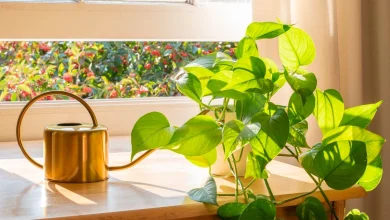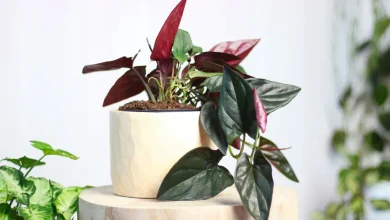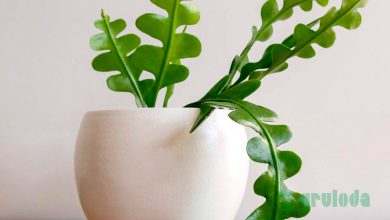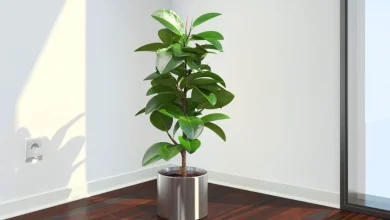Philodendron Micans Care Guide

About Philodendron Micans
The Philodendron Micans is a trailing vine plant known for its velvety, heart-shaped leaves. Native to South America, this philodendron variety is easy to grow and makes an excellent houseplant.
With its deep green leaves accented by a coppery purple underside, the Philodendron Micans brings a pop of color and texture to any indoor space. Its vining nature also makes it perfect for hanging baskets or training up a moss pole.
Ideal Growing Conditions for Philodendron Micans
Providing the right care is key to keeping your Philodendron Micans healthy and helping it thrive. Here are the optimal growing requirements for this plant.
Philodendron Micans Light Requirements
Philodendron Micans prefers bright, indirect light. Some morning or late afternoon sun is fine, but harsh direct light can scorch the leaves.
Keep it in a spot near an east or west-facing window. Avoid southern exposure as this may be too intense.
Philodendron Micans Temperature
This Philodendron variety does best in warm temperatures between 65-80°F (18-27°C). Avoid cold drafts.
Philodendron Micans Humidity
High humidity is essential for Philodendron Micans to prevent bacterial leaf spot disease. Maintain 40-60% relative humidity around the plant.
Use a humidifier, pebble tray, or group plants together to boost moisture levels. Mist the leaves frequently as well.
Philodendron Micans Soil
Use a well-draining potting mix for Philodendrons. Aim for a soil with loam, peat moss, and perlite. It should retain some moisture but not get soggy or compacted.
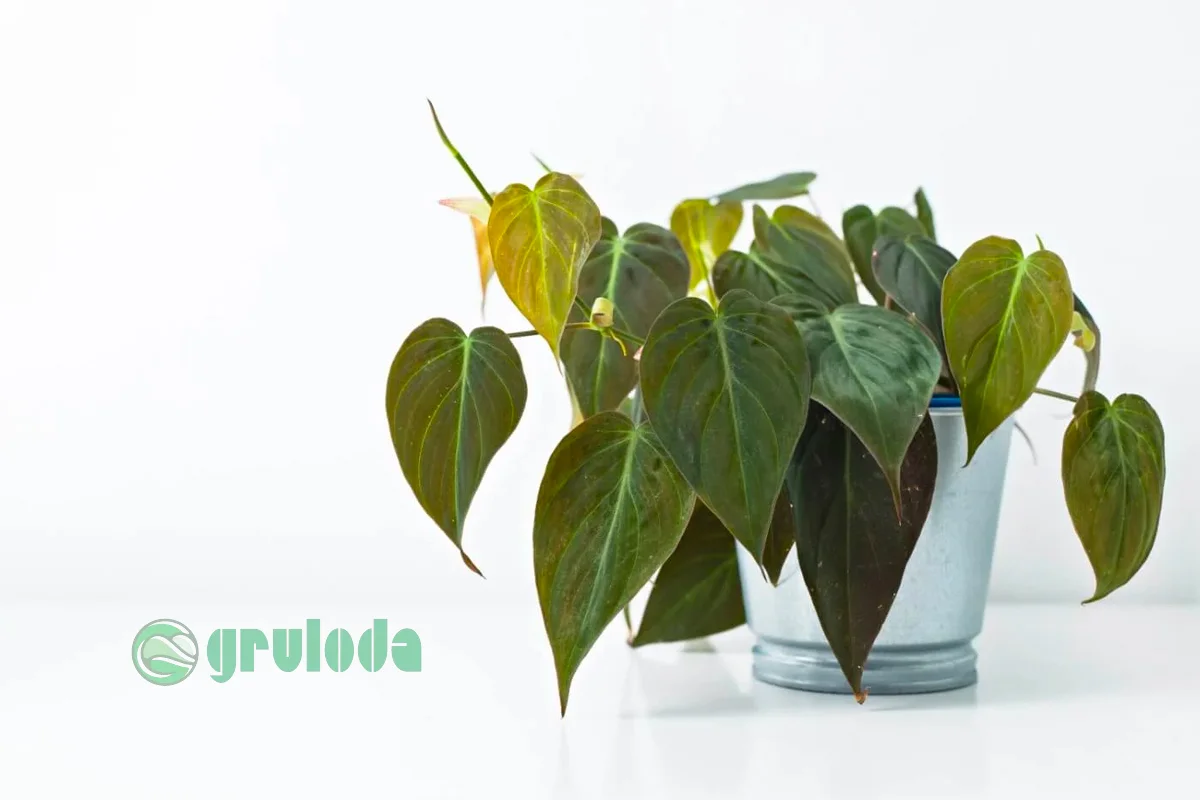
Best Soil for Philodendron Micans
Here are some tips on the best potting soil for Philodendron Micans:
- Use a light, well-draining soil. These plants don’t like wet feet.
- Aim for a mix that contains peat moss, compost, perlite or bark chips. These provide nutrients and aeration.
- Good options include:
- Potting mix designed for aroids or philodendrons
- Mix of 60% peat moss and 40% perlite or vermiculite
- Half potting soil, half orchid bark mix
- Regular potting mix amended with added perlite and orchid bark
- Avoid 100% potting soil or dense soil blends. They retain too much moisture.
- Make sure the soil is not too dense or compacted. Philodendron Micans roots need air flow.
- Add in materials like orchid bark, charcoal, tree fern fiber or coco coir to improve drainage.
- Maintain a pH between 5.5-7.0. These plants like slightly acidic to neutral soil.
- Re-pot every 2-3 years in fresh soil, or when the roots have filled the container.
Providing Philodendron Micans with an airy, light, fast-draining soil is the key to healthy roots and lush growth. Check the soil frequently and water thoroughly only when the top inches become dry. A well-aerated potting mix that doesn’t get waterlogged is ideal for these tropical epiphytes.
How to Care for a Philodendron Micans
Caring for this vining plant is straightforward if you meet its basic needs. Here are some care tips:
Philodendron Micans Watering
Water thoroughly whenever the top inch of soil feels dry. Allow it to drain completely to prevent root rot.
Increase watering in summer and reduce in winter, following seasonal growth patterns. The leaves will start to droop when it needs water.
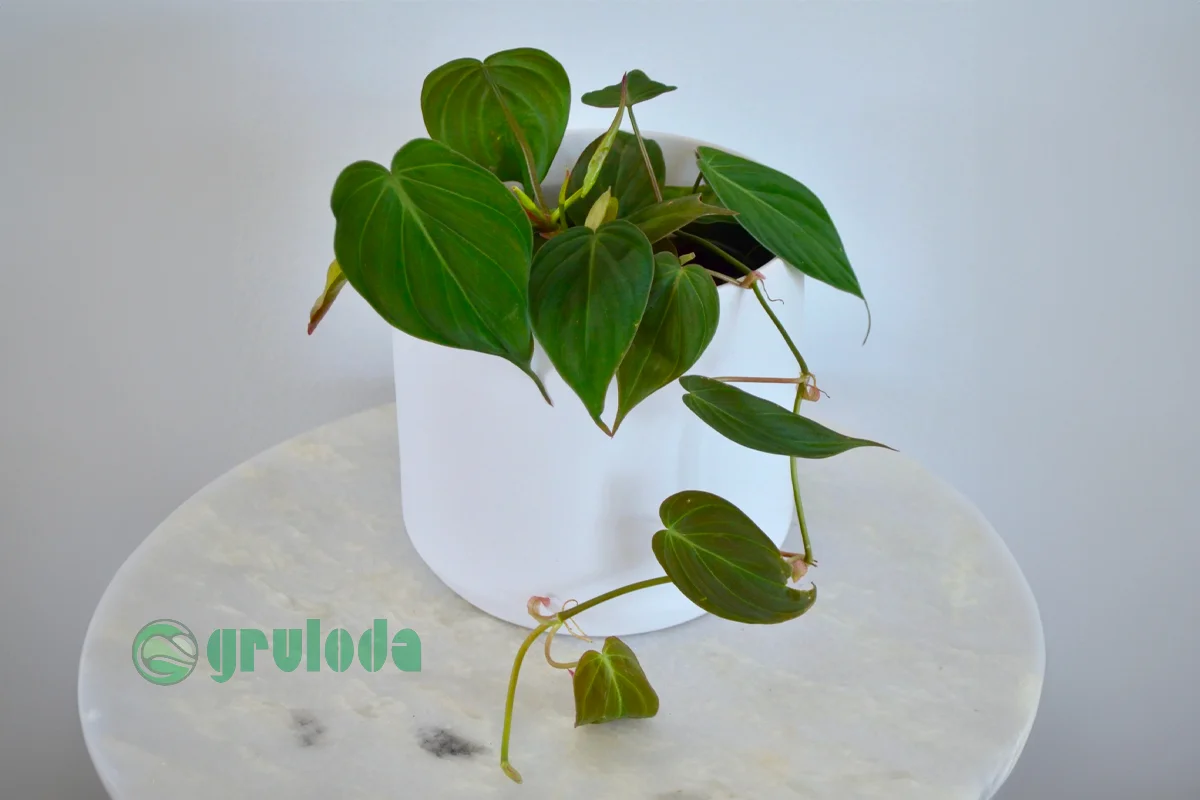
Fertilizing
Fertilize monthly in the growing season with a balanced, liquid houseplant fertilizer. Dilute to half strength. Fertilize every 6-8 weeks in winter.
Pruning
Pinch back long, leggy stems to encourage bushier growth. Prune any damaged or diseased foliage.
Repotting
Repot in spring every 2-3 years when pot-bound. Move to a container one size larger with fresh potting mix.
Common Problems with Philodendron Micans
Here are some common issues and how to fix them:
Leaf Spotting
Small brown spots on the leaves indicate bacterial leaf spot disease. Increase airflow and humidity around the plant. Remove affected leaves and don’t overwater.
Drooping Leaves
Drooping leaves usually mean the plant is thirsty and needs water. Let the soil dry out between waterings.
Leggy Growth
If stems become elongated and sparse, the plant isn’t getting enough light. Provide brighter indirect light to encourage full, compact growth.
Tips for Healthy Philodendron Micans
Follow these tips for your Philodendron Micans to thrive:
Provide Support for Climbing
Give climbing stems a moss pole, trellis or other vertical support to grow on. This encourages healthy development.
Increase Humidity
Use a pebble tray, mist frequently, or get a humidifier to keep the ambient humidity around the plant at 40% or higher.
Clean the Leaves
Gently wipe the foliage once in a while with a damp cloth to get rid of dust and improve light exposure.
Propagating Philodendron Micans
Propagate this Philodendron by:
Stem Cuttings
Take 6 inch cuttings, dip in rooting hormone, and plant in soil. Keep warm and humid. New roots will sprout in a few weeks.
Air Layering
Remove a ring of outer stem, add sphagnum moss, and wrap in plastic. New aerial roots will form. Cut below roots & pot up.

Philodendron Micans Propagation
Here are some tips on propagating Philodendron Micans:
Stem Cuttings
The easiest way to propagate Philodendron Micans is through stem cuttings. Take a cutting that has a few leaves on it and is around 4-6 inches long. Remove the bottom leaves and dip the end in rooting hormone powder to encourage new root growth. Plant the cutting in moist potting mix, sand, or water. Keep it warm and humid while new roots develop in 4-6 weeks.
Once rooted, transplant into a pot with well-draining soil. Keep the newly propagated plant humid until established.
Air Layering
You can also propagate Philodendron Micans through air layering. Choose a healthy stem and wound it by removing a 1-2 inch ring of outer stem. Wrap this area with damp sphagnum moss and cover with plastic wrap. This encourages aerial roots to sprout above the wound.
Once a substantial bundle of roots has grown, cut below the roots and plant in soil. Keep the plant humid while it establishes. This propagates the plant while still attached to the parent.
Division
Mature Philodendron Micans plants can be divided to create new plants. Carefully separate the rootball into smaller sections, ensuring each division has some roots and stems attached. Replant each new division in its own pot.
Tips
- Take cuttings in spring and summer for best results.
- Keep cuttings warm (70-80°F) and humid after planting.
- Pot up in a well-draining potting mix once rooted.
- Propagations may take longer to mature and grow than the parent. Be patient!
- Water sparingly until new plants are established.
Propagating Philodendron Micans is a great way to create new plants from a mature specimen! Follow these methods for the highest success rate.
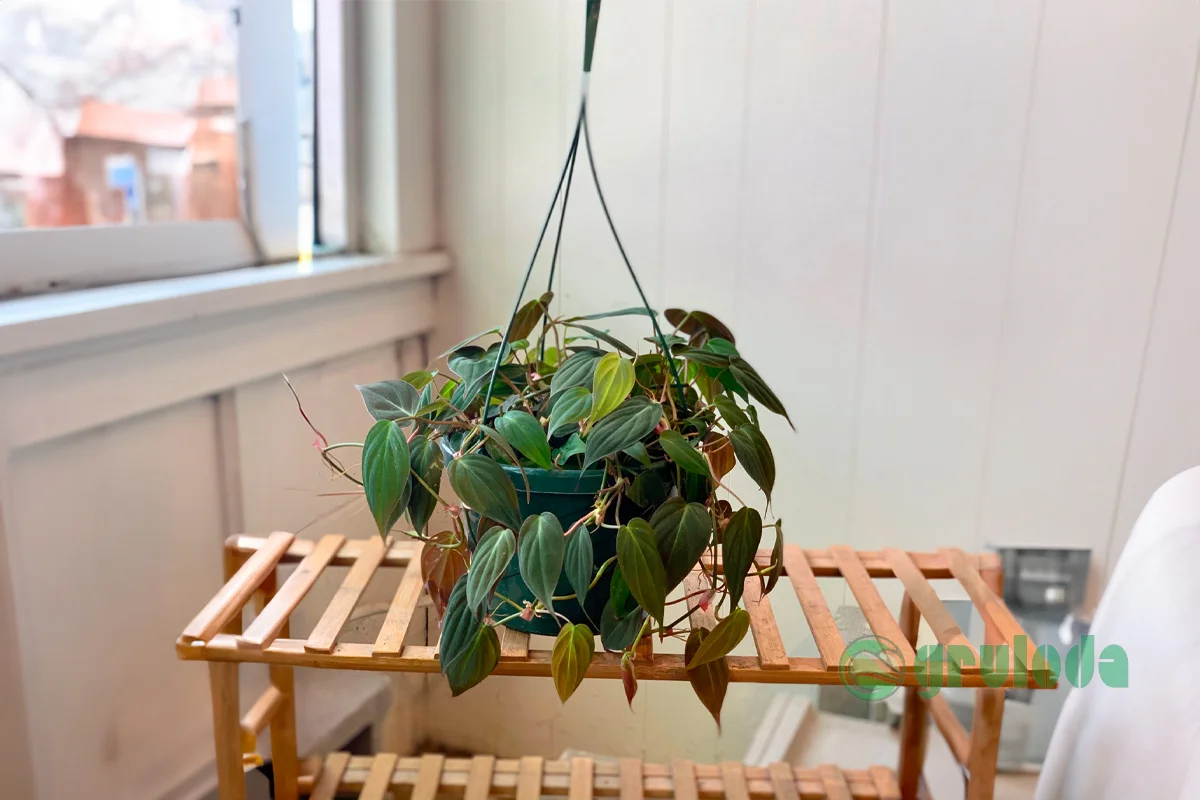
Philodendron Micans Low Light
Here are some tips for caring for a Philodendron Micans in low light conditions:
- Philodendron Micans can tolerate lower light than other philodendron varieties, but they still need some brightness to thrive.
- In low light, their growth will slow down and the leaves can become smaller and more spaced out as the plant stretches to reach for light.
- Place the Philodendron Micans near an east or west-facing window if possible. North-facing rooms are often too dim.
- Consider adding a grow light to supplement natural daylight if the space gets less than 2-3 hours of sun a day. LED growing bulbs work well.
- Rotate the plant periodically so all sides get exposure to the light source. This prevents lopsided growth.
- Prune back any excessively long vines that develop, as these are signs the plant is stretching for light.
- Check the soil more frequently in lower light. The plant will need less frequent watering when growing slower.
- Avoid direct southern exposure, as this can scorch the leaves of a Philodendron Micans acclimated to low light.
- Monitor for signs of insufficient light like small leaves, leggy vines, or leaf loss. Increase light levels if seen.
While not ideal, a Philodendron Micans can do well in lower indirect light with proper acclimation and care. Just adjust your watering and pruning to suit its slower growth rate.
Is Philodendron Micans Toxic to Pets?
Yes, like many Philodendrons, the Philodendron Micans is mildly toxic to dogs and cats if ingested. Symptoms may include mouth irritation, vomiting, and diarrhea. Keep out of reach of pets and children.
Interesting Facts About Philodendron Micans
- Native to the tropical forests of South America.
- Also known as the Velvet Leaf Philodendron due to its velvety feel.
- Leaves have a unique iridescent, purple-colored underside.
- Can grow up to 3 feet long in its native habitat but smaller indoors.
- One of the more forgiving Philodendron varieties for beginners.
- Used to add a pop of color and visual interest to indoor spaces.
- Traces its taxonomy back to the Greek words for “tree loving”.
Conclusion
With its lush green and purple foliage, the Philodendron Micans makes a statement wherever it grows. Provide this tropical plant with indirect light, frequent watering, high humidity, and warm temperatures for it to do its best. Prune when needed, fertilize regularly, and repot every few years in fresh soil for optimal health. With the proper care, your Philodendron Micans will cascade beautifully for many years to come.
FAQs
How fast does Philodendron Micans grow?
In optimal conditions, the Philodendron Micans grows up to 3 feet long and trail down nicely. Indoors, expect growth of around 1 foot per year.
What is the best way to stake a Philodendron Micans?
Use plant velcro or soft ties to gently secure climbing stems to a moss pole or trellis. Avoid rough stakes that can damage the soft stems.
Should I mist my Philodendron Micans?
Yes, misting the leaves every couple days helps increase humidity around the plant which it appreciates. Be sure to keep the soil moist but not soggy.
What temperature is too cold for a Philodendron Micans?
Avoid exposing it to temperatures below 55°F (13°C) for too long. Cold drafts can shock the plant and cause leaf damage.
How do I revive a droopy Philodendron Micans?
Droopy leaves usually indicate the plant needs more water. Water thoroughly until it drains from the bottom and allow the soil to partly dry out before watering again. Increase humidity as well.



